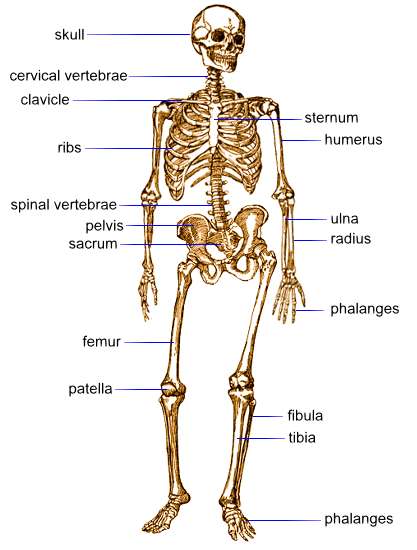The human skeleton is made from 206 bones which create a framework that supports and protects the body's soft tissues and organs.
Movement is the result of the muscles acting on the bones of the skeletal system. Muscles are connected to bones by tendons; bones are connected to each other by ligaments. The places where bones meet each other are called joints.
The main difference between the male and female skeleton is that females have a wider pelvis to allow for childbirth. Smaller diferences include a shorter, straighter clavicle in the female (resulting in narrow sloping shoulders), as well as a smaller skull and smaller, lighter bones.
The skeleton produces red blood cells from the bone marrow of certain bones and white cells from the marrow of other bones. The skeleton's bones also store minerals such as calcium.
Babies are born with 270 soft bones (about 64 more than an adult); many of these will fuse together by age twenty, into the 206 hard, permanent bones.
Click on a label at the right or a link below to find out more about each part of the skeleton.
|

|